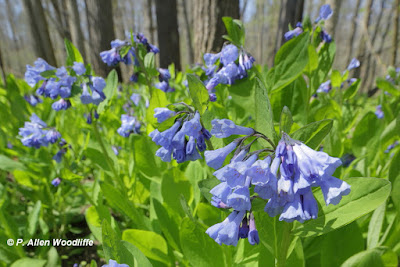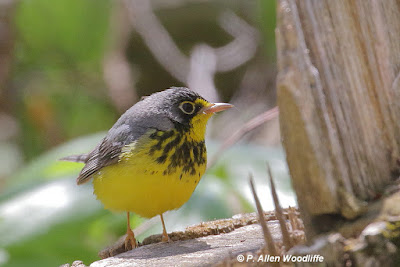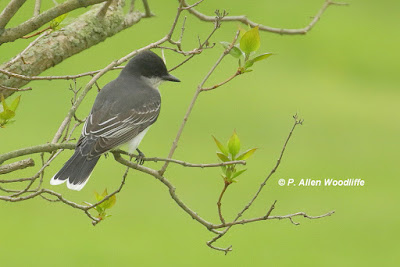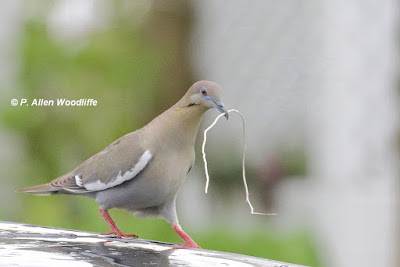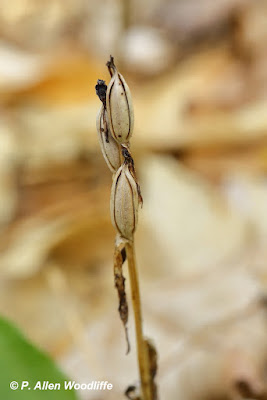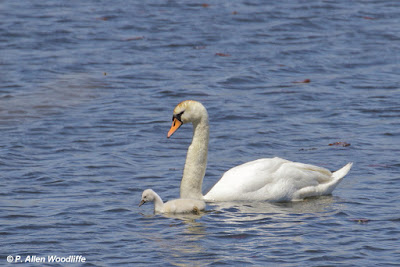One of the first things you may notice when checking out this post is a new header photo. I hate to see the American Avocets go, but this next one deserves the profile. It highlights a wonderful experience I had earlier in the month at the Sydenham River Nature Reserve. The Virginia Bluebells (Mertensia virginica) are truly spectacular here, but only for a few days. They are so abundant that in the overall site, on both sides of the river, there must be at least 40 acres of them! It isn't a rare Ontario species, but certainly is not common although they can be abundant where they are found. It is ranked as S3, which means there are more than 20 locations but fewer than 100 locations in Ontario. I think it is safe to say that there are fewer than 50 naturally occurring populations in Ontario.
Once they finish flowering, the plant flops onto the ground and quickly gets hidden by other vegetation, and in just a few weeks the entire plant seems to disappear. But for a couple of weeks in early May, it is a sight to behold.
There are other wildflowers about, although not many in the deeper woodland areas which are almost fully shaded now. Jack-in-the-pulpit is quite common and widespread.
Large-flowered Bellwort can be abundant.
One of the least observed spring wildflowers is this next one: Mitrewort. The plant is not usually very abundant, but is not rare by any means. However the entire plant is seldom more than 40 cm (16") tall, and the tiny flowers are barely 4-5 mm across.
In woodland pools, this Yellow Water Crowfoot, a type of buttercup, can be abundant.
On one of my most recent visits to Rondeau, I came across this Eastern Foxsnake, an officially endangered reptile, enjoying the quiet roadway.
Elsewhere in the park were these Five-lined Skinks, also endangered and Ontario's only lizard. It is sometimes called a Blue-tailed Skink, as the one in this next photo shows, but it is only the young ones that have the blue tail. This particular individual is playing Ostrich, with its head buried in the sand. It was quite healthy as far as I could tell, as it quickly scurried away shortly after I got this photo.
 | |||
| Adult Five-lined Skink |
I wanted to get to the southeast beach to check on shorebirds. Along the way I came across this clump of Puccoon, the only one I saw in flower that day, but by now, there should be plenty out.
My real hope was to find a few Whimbrel, a large brownish shorebird with a long, down curved bill and are typically found in the area for only a few days in spring. I was pleased to find 6 birds, and got these 5 in the photo.
I also had a visit to the McGeachy Pond and Erieau Rail trails for a few hours one day. There were a few birds, but the day before it had been really exceptional with numbers and diversity. American Redstarts were plentiful the day I was there, including this young male which really wasn't trying to serenade me I am sure.
There were at least a couple of Northern Parula, a species of warbler which always used to seem hard to find. This one was quite approachable, almost too close to focus on!
I saw both Yellow-billed and Black-billed Cuckoos, which are typically hard to photograph. However this Black-billed Cuckoo obliged me for a few minutes.
The trail edges have lots of this next species along it: Dame's Rocket is very colourful, but not native.
The wetlands had lots of turtles. I did see a couple of Blanding's Turtles, but got no photos. However this adult Midland Painted Turtle....
....and this hatchling of last year, were more cooperative.
The Blenheim Sewage Lagoons are now open to birders, with a municipally provided permit. Birders have to keep numbers down to 5 or less, and practice social distancing. I went to check them out the first day they were open, and unfortunately the overall bird diversity was quite low. Only 4 species of waterfowl (Canada Geese, Mute Swan, Mallard and Ruddy Duck) and only two species of shorebird (Killdeer and Spotted Sandpiper) were there. Nothing to get excited about, and with the water in the ponds very high, and the sprinkler cells totally dry, they aren't going to be very exciting for birds or birders anytime soon. However I did have an unexpected highlight. A couple of Red Fox pups were scampering around, and quite surprised to see a human based on their apparent urgency to get far, far away when I appeared. They were partially back lit, so not the ideal photo but I was certainly happy to get these.


